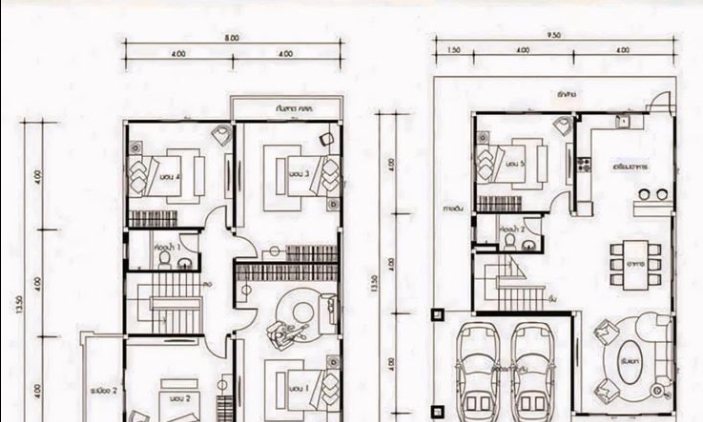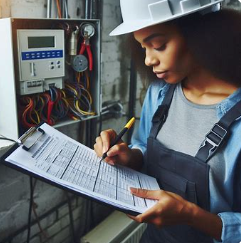Sustainable Building Materials Leading the Way to a Greener Future
5 Min read
)
August 6, 2024
The urgency for the construction sector to adopt sustainable practices is highlighted by its significant environmental footprint. The industry is a major consumer of materials and energy and a substantial contributor to global CO2 emissions. However, this challenge also presents an unparalleled opportunity for the sector to lead by example, demonstrating how innovative practices and materials can drastically reduce its environmental impact while enhancing the functionality and aesthetics of built environments.
The transformation toward sustainable construction is marked by the adoption of groundbreaking building materials that promise to redefine the industry's relationship with the environment. These materials not only offer improved performance and efficiency but also play a crucial role in reducing the carbon footprint of construction activities. Here's a deeper dive into some of the key materials driving this change:
Bamboo
:format(webp))
Imagine a material as sturdy as wood but more flexible and eco-friendly. That's bamboo for you. Its rapid growth and versatility make it a star in sustainable building, perfect for everything from framing to flooring. Plus, it's a champion carbon absorber, cleaning the air as it grows.
Recycled Plastic
Plastic waste is a global crisis, but in the construction world, it's finding a new purpose. Recycled into bricks, panels, and even faux lumber, plastic waste is getting a second life, helping reduce landfill and ocean pollution.
Laminated Timber
Laminated timber, or mass timber, is giving traditional materials like steel and concrete a run for their money. It's not just about its lower carbon footprint; it's about bringing warmth and natural beauty to buildings without sacrificing strength.
Stone
Stone is as old as construction itself but remains one of the most sustainable choices. Its durability, low maintenance, and minimal waste production make it a go-to for green building projects.
Cob
There's something poetic about using the earth to build. Cob, a mixture of soil, straw, and lime, offers an inexpensive and environmentally friendly alternative to concrete, with the added benefit of natural insulation.
Cork
Cork insulation is slowly making its way from Europe to the global market. Harvested without harming the cork oak tree, it's a testament to sustainable practice, offering excellent insulation while being completely renewable.
Adobe Brick
Adobe brick takes us back to ancient times, proving that some of the best building materials come straight from the earth. It’s perfect for maintaining indoor temperatures and reducing energy consumption.
Reclaimed Wood
Reclaimed wood is all about giving old lumber a second chance, reducing the need for new wood and, consequently, deforestation. Plus, it adds a story and character to any space.
Precast Concrete
Precast concrete changes the game by being made to measure in factories and then transported to sites, significantly reducing waste and adapting seamlessly to different climates.
Mycelium
Mycelium, the root system of mushrooms, might just be the most futuristic building material yet. It's renewable, compostable, and when combined with organic waste, it can create strong, durable building bricks.
Sheep's Wool
Sheep's wool is not just for sweaters. As an insulation material, it outperforms many man-made alternatives, offering a sustainable way to keep buildings warm or cool.
Pollution-Absorbing Bricks
Imagine buildings that help clean the air. Pollution-absorbing bricks do exactly that, with their special design allowing air to pass through porous layers, trapping pollutants. This brilliant innovation promises not only structural integrity but also a proactive solution to urban air pollution.
3D-Printed Concrete
3D-printed concrete is revolutionizing how we think about construction waste and material efficiency. By precisely printing what's needed, this technology drastically reduces excess, offering a smarter, cleaner way to build. Its ability to create intricate designs on demand also opens up new vistas for architectural creativity.
Cordwood Construction
:format(webp))
Cordwood uses short logs stacked crosswise, secured with a natural mortar mix, to create visually stunning, highly insulating walls. This method not only utilizes local resources, reducing transportation emissions but also integrates beautifully with natural surroundings.
Recycled Tires
Once a symbol of waste and environmental hazard, recycled tires are finding new life in construction. Used as insulation in Earthship homes or repurposed into rubber blocks for building, they offer a resilient and eco-conscious alternative to traditional materials.
Newspaper Wood
Newspaper wood reverses the paper-making process by compressing paper back into wood. This innovative material showcases the potential for high-value reuse of paper waste, offering a sustainable alternative for furniture and interior design, hinting at future applications in construction.
Plant-Based Polyurethane Rigid Foam
With a blend of bamboo, hemp, and kelp, plant-based polyurethane rigid foam presents a sustainable, high-performance insulation option. This material not only offers excellent thermal properties but also supports healthier indoor air quality and a lower environmental footprint.
Straw Bales
Straw bale construction harks back to simpler times but stands out today for its outstanding insulation properties and minimal environmental impact. Properly protected from moisture, straw bales can last for decades, offering a renewable, energy-efficient building solution.
Recycled Glass
Recycled glass is breaking through as a sustainable aggregate in concrete and as a decorative material. This approach not only diverts glass from landfills but also conserves natural resources, offering an aesthetically pleasing and eco-friendly alternative for construction.
Recycled Steel
:format(webp))
Recycled steel brings the durability and strength expected of new steel but with a fraction of the environmental impact. By reusing steel, the construction industry can significantly reduce its carbon footprint, energy consumption, and resource depletion, underscoring steel's role in sustainable building practices.
Together, these materials paint a picture of a construction industry at the cusp of a sustainability revolution. By embracing these innovative solutions, builders and architects are not just responding to environmental challenges; they're actively contributing to a healthier planet. Each material, from bamboo to recycled steel, offers a unique set of benefits that, when harnessed, can lead to buildings that are not only eco-friendly but also durable, aesthetically pleasing, and reflective of a commitment to preserving our world for future generations

Rex Walz is Boom & Bucket's Manager of Supplier Relations, bringing over a decade of experience in B2B sales and heavy equipment solutions. With a background spanning government, construction, industrial, and commercial sectors, he has a proven track record of driving growth and building trusted customer relationships. At Boom & Bucket, Rex is passionate about helping partners succeed while advancing the company's mission to create the most trusted marketplace for heavy equipment.














